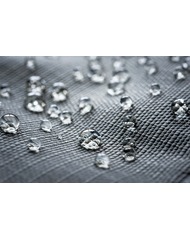Do Horses Really Need Fly Masks and Bonnets in Australia?

How Fly Masks and Bonnets Protect Horses from Flies, Sun and Dust in Australian Summers
Updated September 2025
A practical guide for Australian horse owners on when horses need fly masks and bonnets - covering protection, airflow, UV safety, fit, and seasonal care to keep horses comfortable through summer.
Every Australian horse owner knows how relentless summer can be, with blazing UV, dust carried by hot winds, and endless swarms of bush flies, march flies, stable flies, midges, and mosquitoes. These pests aren’t just irritating; they can affect your horse’s health, mood, and ability to focus. That’s why many riders ask: “Does my horse really need a fly mask or bonnet?”
The answer is often yes. While not every horse requires one, masks and bonnets can make a huge difference to comfort, health, and performance, especially for horses with sensitive eyes, light-coloured skin, or those kept in areas with high insect pressure. Let’s explore when and why they’re useful, and what to look for in a good fit.
Why fly masks are more than just insect protection
It’s easy to think fly masks are only about keeping pests off. In reality, they solve several problems common in Australian paddocks:
- Eye health: Flies are attracted to moisture and can introduce bacteria into the eye. Constant irritation can lead to rubbing, abrasions, or even infections. A mask acts as a barrier, keeping flies and dust away from the cornea.
- UV protection: Our harsh sun isn’t just uncomfortable; overexposure can contribute to sunburn on pink skin and long-term eye damage. Quality masks with UV-stabilised mesh help reduce the risk.
- Dust and debris: Dry spells, sandy arenas, or tall seed heads can irritate eyes. A mask prevents grit and plant matter from scratching delicate tissue.
- Comfort and focus: Horses plagued by insects often shake their heads, rub on posts, or become unsettled under saddle. A mask or bonnet provides calm, consistent relief.
When a bonnet is the better choice
Fly bonnets serve a slightly different role. Designed to be worn under a bridle, they primarily protect the ears and reduce irritation during work. They are especially useful for:
- Horses that head-shake when flies buzz around their ears.
- Riding in insect-prone areas, like bushland trails or near water.
- Reducing distractions during training or competition.
Unlike masks, bonnets don’t cover the eyes, so they’re best suited to ridden work where full visibility is essential.
What to look for in a good fly mask or bonnet
Not all masks are created equal. The best options combine durability, airflow, and comfort. Key features include:
- Clearance around the eyes: Structured mesh domes or darts prevent rubbing against eyelashes or the cornea.
- Breathable mesh: Raised-weave or flat-weave designs balance airflow with UV and insect protection.
- Soft padding: Fleece at the poll, brow, or muzzle helps avoid rubs, especially during long wear.
- Secure fit: Adjustable straps should hold the mask steady without being overtightened. A snug fit reduces rotation and rubbing.
- Optional extras: Ear covers for midge-prone areas, shaped nose flaps for pink skin, and quick-dry fabrics for humid climates.
Do’s and don’ts for safe use
- Do check the mask and your horse’s face daily for rubs, dust build-up, or burrs.
- Do keep it clean. Rotate between masks so one can be washed while the other is in use.
- Do reassess fit after dental work, weight change, or bridle adjustment.
- Don’t overtighten straps; you should still fit a finger under them.
- Don’t leave a mask on unsupervised for long periods without checking. Horses can snag masks on fences or rub them off.
Special considerations for Australian horses
Heat and airflow: Horses in humid regions like Queensland need breathable meshes. Avoid overly heavy fabrics in extreme heat.
Queensland Itch: Horses prone to insect hypersensitivity often benefit from masks with ear and nose coverage as part of a wider management plan.
Bushfire risk: On days of extreme fire danger, consider removing synthetic gear like masks if horses are unsupervised, as some materials can deform under intense heat.
So, does your horse need a fly mask?
Not every horse does. Some tolerate flies well, have darker skin and are less prone to sunburn. Others, especially pink-skinned horses, those in high-insect areas, or horses with existing eye issues, benefit enormously. The key is to know your horse, assess their environment, and use masks or bonnets as a tool to keep them comfortable and safe.
Delzani options built for Australian summers
At Delzani, we design fly masks and bonnets with airflow, visibility and comfort in mind. Our range includes:
- Fly Mask Veil - ballistic nylon mesh with fleece padding, shaped for eye clearance and secure fit.
- Deluxe Bonnet with Enclosed Ears - soft raised mesh, oversized eye domes, nose flap and removable ears.
Explore all Fly Masks & Bonnets
Used correctly, fly masks and bonnets are a simple, effective way to improve your horse’s comfort and protect them from the challenges of an Australian summer.
Written by Jane Griffiths - An experienced Australian horse owner and product developer with over three decades immersed in equestrian life. Jane has spent years refining horse rugs, tack, and riding apparel to better suit Australian climates. She has enjoyed countless weekends at gymkhanas, show jumping events, and pony club competitions with her daughter, and still loves hitting the trails with friends whenever she can. Her lifelong passion for horses and hands-on understanding of equine comfort continue to shape her practical, rider-first approach to horse care and product design.
Related Equestrian Guides
Understanding your horse rugs waterproofing
Learn how horse rug waterproofing and breathability really work, why membranes matter more than fabric, and how to test, care for, and choose rainsheets. Explore Delzani’s 600D Waratah and 1200D Wyndham rugs, built for tough Australian conditions.
Fly Masks & Fly Veils for Horses
Keep your horse calm, protected, and focused this summer with Delzani fly masks and veils, breathable comfort, Sun defence, and rider-trusted performance built for Australian conditions.
Managing and Preventing Queensland Itch in Horses
Banish the Itch: Managing and Preventing Queensland Itch in Horses
Best Horse Grooming Brushes & Combs in Australia
An Australian guide to horse grooming brushes and combs, covering brush types, benefits, routines, seasonal care, and Delzani’s HAAS collection for healthy, shiny coats.
Horse Cooling Guide: Preventing Overheating and Heat Stress After Exercise
Hot Aussie summers put horses at real risk of heat stress. Learn how to prevent overheating, cool your horse safely after exercise, and spot early warning signs. With smart care and the right gear, you can keep your horse comfortable, safe, and thriving.
Choosing the Right Summer Horse Rug in Australia
Summer rugs protect Australian horses from heat, insects, and UV. Learn how fly mesh, flag, and lightweight fabrics balance airflow, durability, and comfort to keep your horse cool, protected, and happy in hot conditions.
Why Fly Mesh Rugs Are Essential for Horses in Summer
Fly mesh horse rugs protect Australian horses from harsh UV, flies, and summer heat. Learn how breathable Barcoo, Warrego, and Barcoo Lite fabrics balance airflow, insect defence, and coat comfort for cooler, healthier, and stress-free horses.
Horse Hay Nets and Feed Bags: Smarter Feeding Solutions
Keep hay off the ground, stretch your feed bill further, and keep horses calmer with the right feeder. Learn when to choose a hay net, hay bag, or bale carry bag for cleaner, safer, and smarter feeding in Australian conditions.














